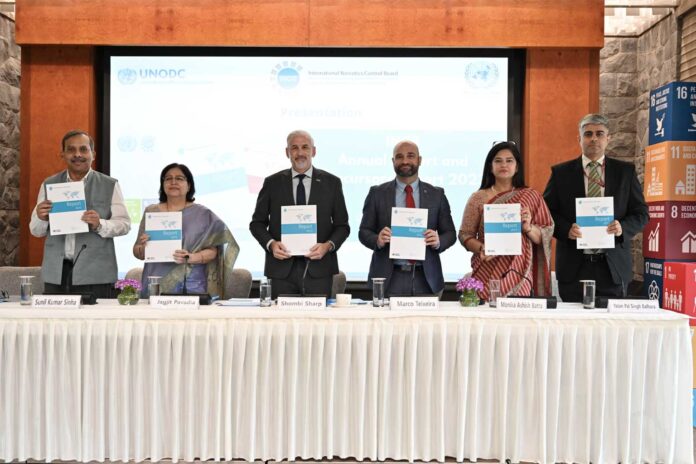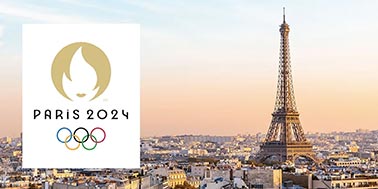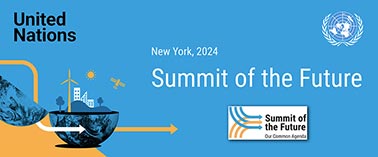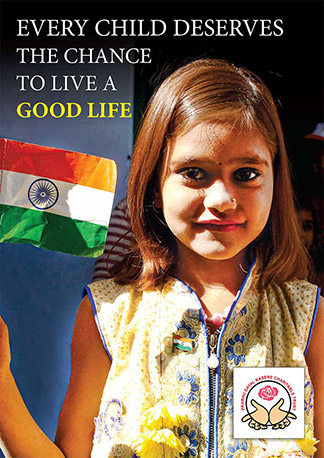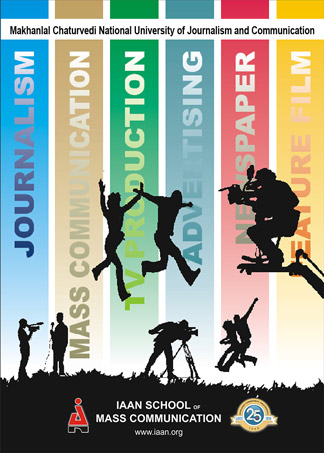Opiate use in South Asia has skyrocketed, with India accounting for nearly 90% of the region’s users, the International Narcotics Control Board (INCB) reported. The INCB’s 2023 annual report indicates a significant shift in global drug dynamics, with South Asia emerging as the largest consumer market for opiates.
The report was presented at UN House, New Delhi today by the United Nations Office on Drugs and Crime, with Ms. Jagjit Pavadia, Member, INCB giving the keynote address and presentation. The International Narcotics Control Board serves as an independent and quasi-judicial monitoring body for the implementation of the United Nations international drug control conventions. Alongside Ms. Pavadia, Mr. Shombi Sharp, UN Resident Coordinator in India, Mr. Marco Teixeira, Regional Representative, UNODC South Asia and Senior Representatives of the Government of India, particularly from the Narcotics Control Bureau, Directorate of Revenue Intelligence and AIIMS were present.
According to the report, the proportion of global opiate users in South Asia has nearly doubled over two decades, increasing from 20% in 2002 to 39% in 2021. This surge amounts to approximately 12 million people now using opiates across the region.
The INCB report highlights a troubling rise in narco-terrorism, where proceeds from drug trafficking are increasingly funneling support to terrorist groups and fueling political violence in the region. Notable incidents included joint trafficking of drugs and weapons, with specific cases reported in Bangladesh, India, and Myanmar.
India, the world’s most populous country, is the epicenter of the opiate market in South Asia. In 2021, Indian authorities recorded an opiate use prevalence of 1.1% among the population aged 16 to 64, nearly twice the estimated global average of 0.6%. Furthermore, India led the region in heroin seizures, accounting for two-thirds of the total recorded between 2017 and 2021.
Most of the heroin found in South Asia originated from Afghanistan, which remains the world’s largest producer of opium. The INCB noted an increase in drug trafficking along the southern route that channels Afghan opiates to South Asia and Africa, surpassing the quantities seized on the northern route that traditionally supplies Central Asia and the Russian Federation. Additionally, the UNODC has reported that Myanmar has become a major source of drugs trafficking into India, specially in North-East India.
The report calls on regional authorities to escalate their efforts against drug trafficking and expand access to internationally controlled substances for medical use. It emphasizes the need for enhanced international cooperation and local initiatives to address the escalating challenge posed by the interplay of drug trafficking and regional security.
The INCB also underscored the role of India as a critical transit and destination point for narcotics, urging heightened vigilance and proactive measures to curb the inflow and distribution of illicit drugs. The report suggests that the complex trafficking networks and the significant volume of drugs pose ongoing risks to the stability and health of the region.


